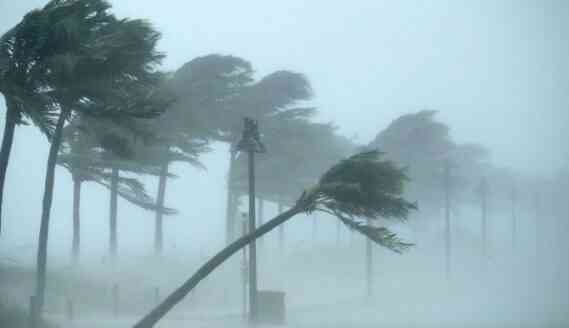Destructive winds have various names — hurricane, storm, cyclone… It doesn’t change the essence — the violence of the elements can cause great destruction and take many lives. It is impossible to resist the forces of nature — you can only try to minimize the damage, eliminate the consequences and move on.
Interesting facts about hurricanes
- Officially, the wind becomes a hurricane when it reaches a speed of 30 meters per second, or 117 kilometers per hour.
- In the southern hemisphere of the Earth, during a hurricane, air currents rotate clockwise, and in the northern — vs.
- The first documented description of a tropical hurricane comes from the navigator Columbus (interesting facts about Columbus).
- During an average hurricane, enough energy is released to power a large metropolitan area for several years.
- The most destructive hurricanes and cyclones are born in tropical climates, and they claim the most lives.
- Hurricanes rage not only on Earth, but also on other planets with an atmosphere. The famous Great Red Spot on Jupiter — a monstrous storm larger than our own planet and has not subsided for several centuries (interesting facts about Jupiter).
- Over the past two hundred years, hurricanes have claimed the lives of almost two million people, and this is only according to official statistics.
- Hurricane Katrina became the most «expensive» in history, causing more than one hundred billion US dollars in destruction.
- Hurricane winds can reach fifteen kilometers in height.
- If several hurricanes meet, one of them may surround the other — this is especially well seen in observations from orbit. At the same time, hurricanes cannot unite into one whole.
- The occurrence of a hurricane directly on the equator is impossible due to the practically absent Coriolis force there.
- Tornado, or tornado — type of hurricane. This is the most frightening sight with a funnel sucking everything around. But while a hurricane can rage for several days, a tornado’s lifespan is usually in minutes, sometimes — hours.
- Hurricanes can cause tornadoes. For example, in 1967, Hurricane Beulah caused 141 tornadoes.
- Powerful hurricanes and cyclones are born only over water, and over land they quickly lose strength and subside.
- Hurricanes, despite the destruction they cause plays a role in the planet’s ecology by carrying air masses over long distances.
- Hurricanes are named from lists that repeat every seven years, but the most destructive of hurricanes are named on an ongoing basis, thus being excluded from the lists.
- At the center of the hurricane, the so-called «eye», there is practically no wind. In diameter «eye» a major hurricane can reach 25-30 kilometers.
- Spain was never able to recover and restore its former power in the sea after a monstrous hurricane swept away and sank the Invincible Armada — Spanish navy.
